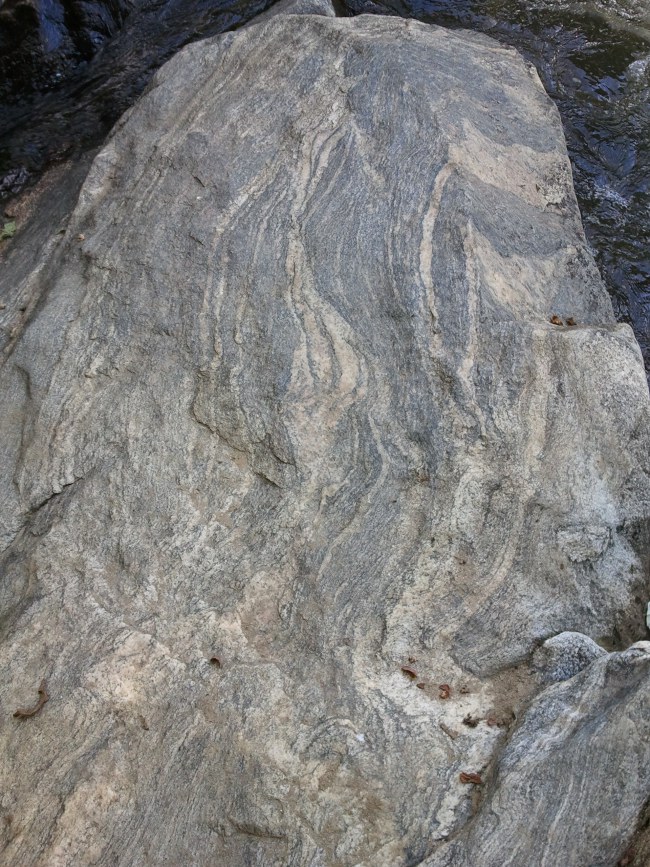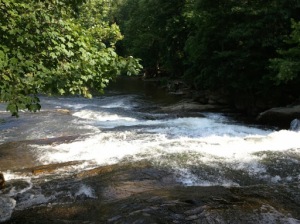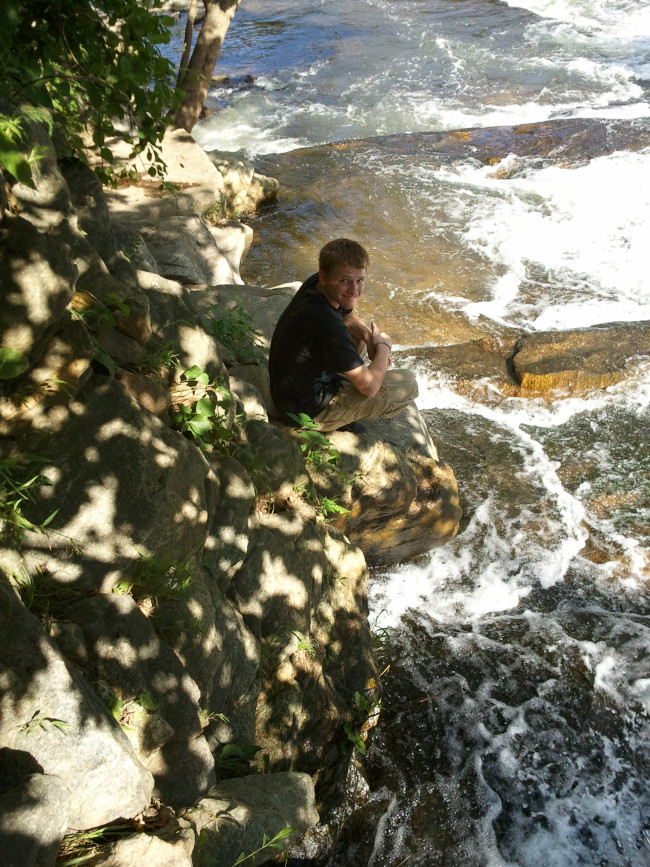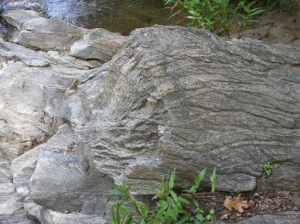Just outside Baltimore, there’s a trail in a state park that winds down toward a small river. The river descends through a short rapids, gliding over rock. The rock is unique; it’s over a billion years old. It’s known as the Baltimore gneiss. This is what it looks like:

The DC metro area has been through four mountain-building periods in the past billion years, give or take a few hundred million. The first one raised the Grenville mountains. Over eons, they drifted around the Earth aboard a tectonic plate, eroding, worn down by wind, water and ice. There were four global glaciation events between 900 and 600 million years ago. The ice certainly extended as far as the DC area during these events, and may have girdled the entire planet. In any event, the Grenville mountains were scoured down and the roots that remained became the “basement rock” of the east coast.
Later there was a rifting that split the Grenville rock, with some blocks being dragged out to sea. Magma welled up and spread, then cooled to form a new layer of rock 2,000 feet thick in some areas. These flows formed the Blue Ridge province, and you can see exposures of that rock at Catocin mountain.
Then another plate began converging on the North American continent, with the ocean floor diving beneath the plate. This generated a chain of underwater volcanoes topped by islands running north and south called the Chopawamsic Arc, similar to the arc of islands in southern Alaska. The plate and these volcanoes eventually converged on the eastern North American coast, sweeping up everything on the sea floor in between, carrying it all back onto the continent where it was raised and mashed and mixed with existing rock. This event created the Taconic mountains.
The Taconics wore down. The Acadian mountains formed when continental fragments collided with the east coast. This episode created much larger mountains than the Taconic. To give you a sense of scale, the erosion of the Acadian mountains created pile of sediment to the west. That pile was 9,000 feet high in central Pennsylvania, sloping down to 1,000 ft in Ohio. That was just the stuff left over after the mountains wore down.
The last period of mountain-building was the biggest one. This time, 250 million years ago, Africa and North America collided as all the other continents came together and formed a single supercontinent known as Pangea. This created the Appalachian mountains, and they were as tall as the Rockies and the Alps when fully formed. They’re much smaller now, of course – that’s what 250 million years of constant erosion does to mountains.

Throughout all of this, the billion-year-old Grenville basement rock has been squeezed, heated, folded and torn apart. It’s metamorphic rock, with complex layers. Most of it still lies deep beneath layers of other rock. But there are some areas around Baltimore where you can see it, and Dylan and I did that today.
This rock is older than multicellular life, at least 400 million years older. It was here 500 million years before land plants existed. Our solar system, along with the entire Milky Way galaxy, completes one rotation around the galactic center every 250 million years. This rock has made the trip four times.
Dylan found some rock fragments at the site and brought them home. The rock has been in the water, it’s hydrated and its age shows. It’s very brittle and flakes easily. As we were leaving, one of the rocks he collected split in half. In that moment, he was gazing on the surface of rock that no one, anywhere, had ever seen before – formed a billion years ago, and only now exposed to light and a 16-year-old’s wondering eyes. It’s been a good day.

